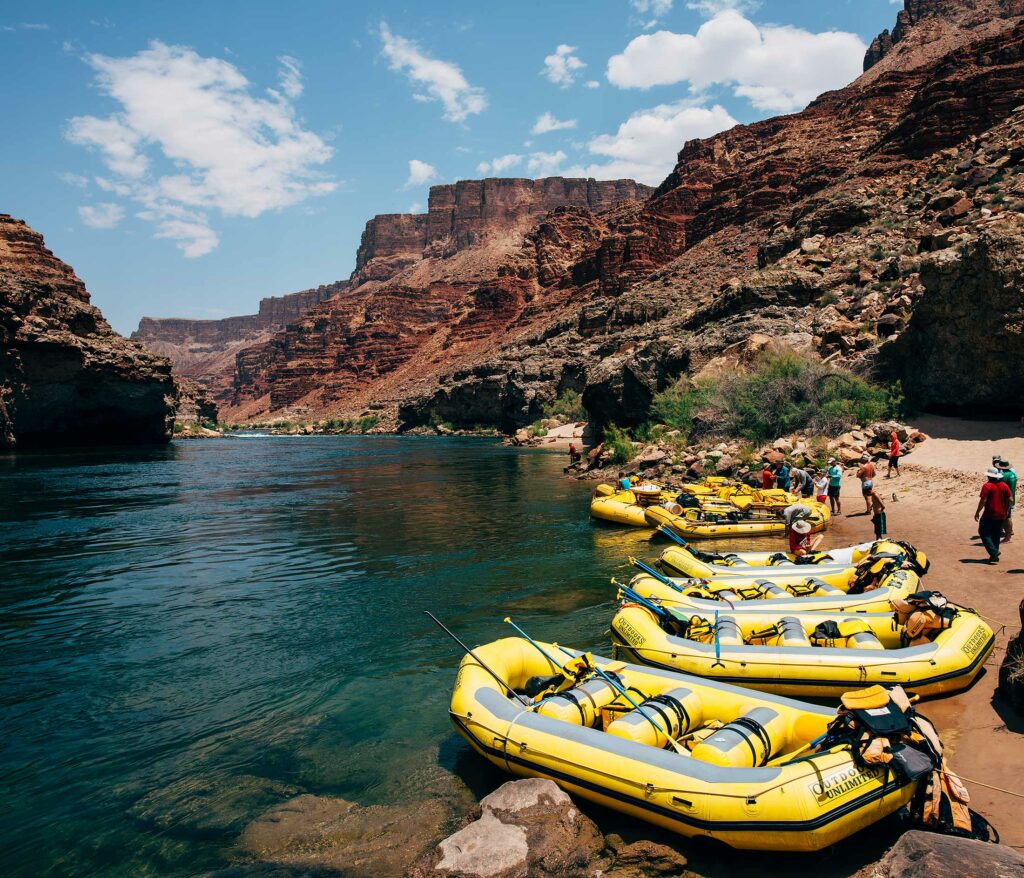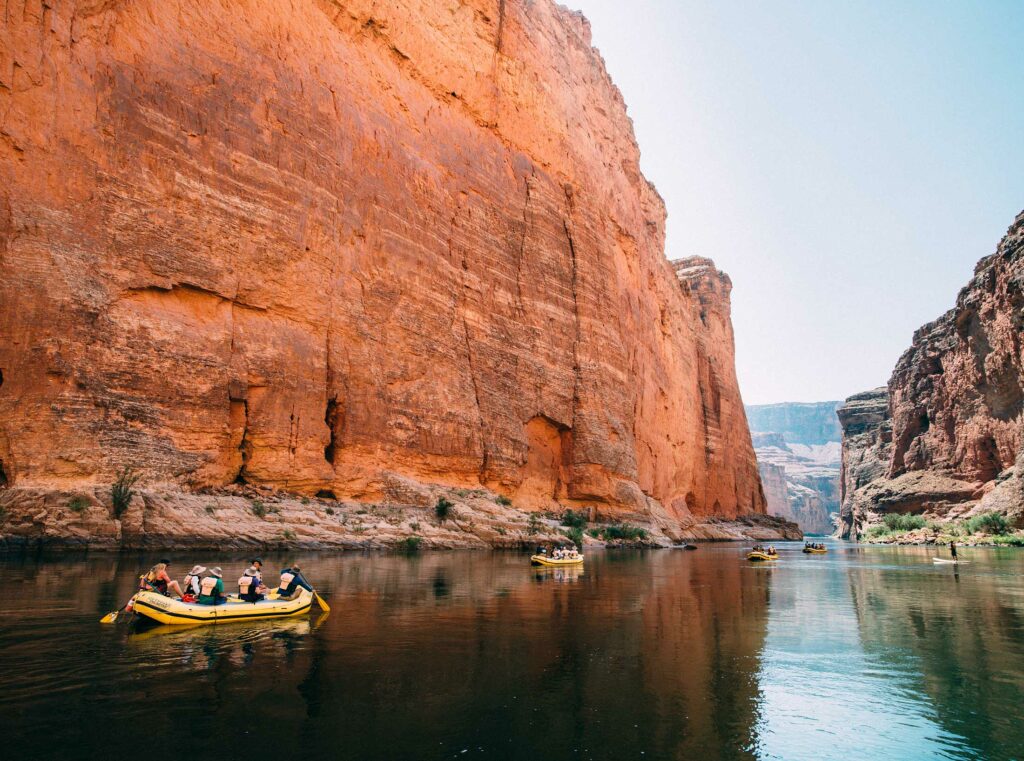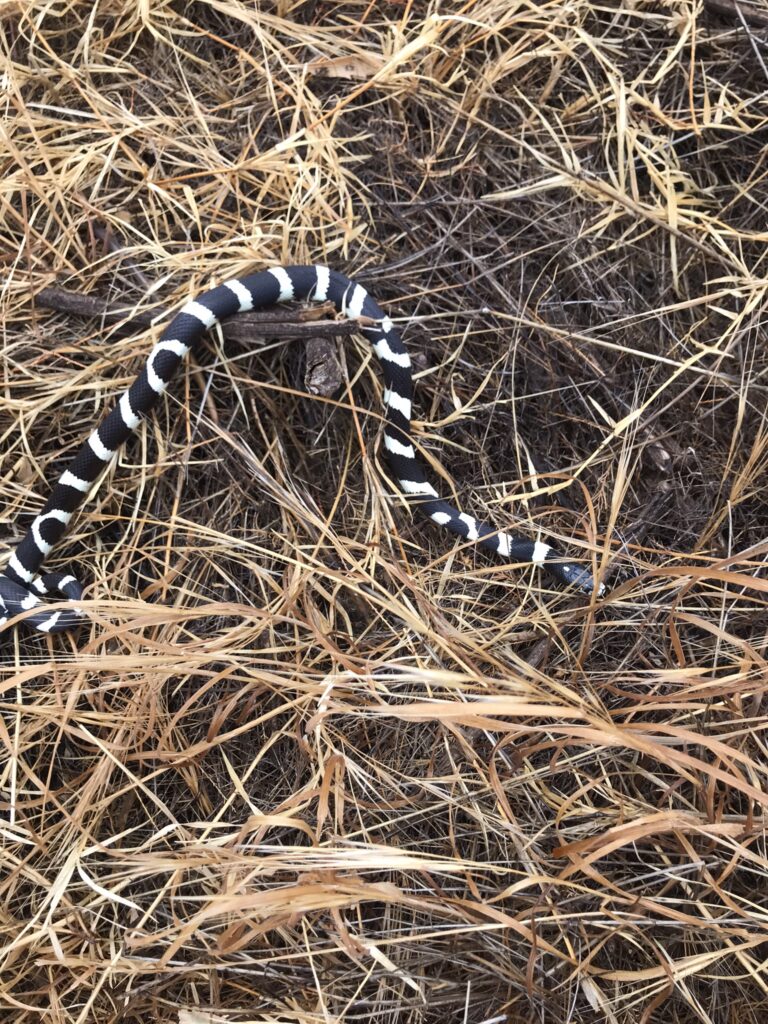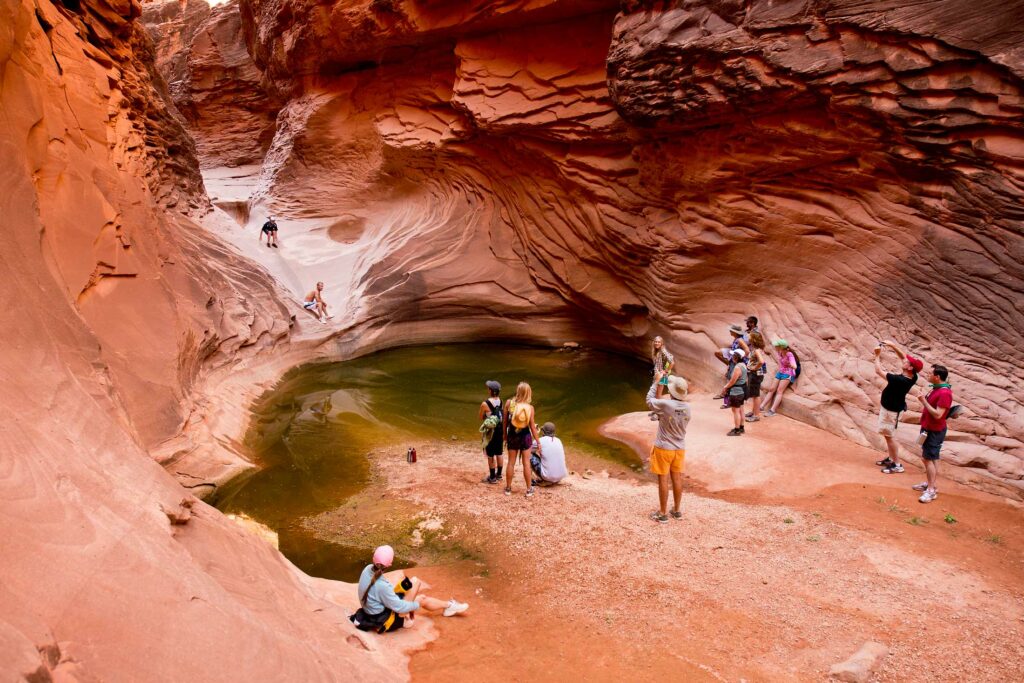Why the Groover? In the early years of multi-day whitewater rafting trips, guides would dig a hole when they got to camp for everyone to use as the latrine. When guides started digging into other latrines from previous groups, they quickly realized something else had to be done. Rules were changed on most rivers around the country and all trips were required to carry out their human waste.
The first version of river toilets used 20mil ammo cans, which could be tightly sealed to prevent leakage. Participants would sit on top of the ammo can, leaving two long grooves on the back of their legs when they stood up. Thus, the Groover was born.
Best Practices and the Rules: Over the years, many studies have been conducted on best practices for protecting the environment while managing human waste in the wilderness. Desert waste is dealt with much differently than rainforest waste. For example, all of our urine on a desert river trip needs to go into the main river channel. This can be done by direct deposit or dumped from the designated Pee Bucket.
Extensive studies on the impact of urine and our sense of smell have proven that urine left on the beach is detrimental to the environment, smells terrible when baked in the sun, and will eventually ruin a beautiful campsite.
At Camp: In camp, a toilet set up will be provided. There will be an ammo can with a modern toilet seat to avoid the grooves for solid waste and a pee bucket next to it for urine. For extra fun, we have to separate our output. If urine is combined with feces in a box in high heat, it can cause some horrific incidents. For some fun and gross reading about old-school tragic Groover incidents, check out, Up Shit Creek: A Collection of Horrifyingly True Wilderness Toilet Misadventures by Joe Lindsay. Gratefully, those are stories of days past, and our updated systems create less havoc.
The privy will have a key, so you will have reasonable privacy when doing your business. Bringing the key back to the handwash station is vital so others know the toilet is available. As we don’t have a resupply source, excessive use of toilet paper is not advised. Running out of TP is never a good thing.
Know where the toilet is before you go to bed so you aren’t wandering around in the dark looking for it. Always bring a headlamp and wear shoes.
Community etiquette when sharing an outdoor toilet:
- If the TP roll is getting low, ask a guide for more. Don’t set the next user up for failure.
- Don’t read a magazine or book at the toilet. Besides the icky cross-contamination, there is likely a line of people with pressing business awaiting their opportunity to use the Groover.
- Remember to return the key so others know they can use the restroom.
- Always wash your hands afterward. A handwash system will be available at the camp toilet’s entrance.
On a Hike, On the River, and at Lunch: Sometimes, our digestive timing does not align with a river camp schedule. If this happens when hiking, the guides carry empty Wag Bags for solid waste. All solid waste and toilet paper must be carried out.
If we have to pee while hiking away from the main corridor, we are asked to go “high and far,” at least 100 feet from the trail or water sources. This helps to avoid the accumulation of urine and the related strong smell. Whenever we are on or near the river, we are expected to urinate directly in the river and at least 100 feet away from any side streams.
We also carry the “Day Tripper,” a small portable toilet for use at lunch or hiking stops. This allows you to find your own private and scenic spot to take care of business.
In the End: For many folks, this is a concerning aspect of their upcoming river trip. Do not worry; people have been relieving themselves in the wilderness long before toilets were invented. Simple systems make your outdoor toileting adventure easy to manage.
And yes, everyone poops in the box.
Heather Snow
Grand Canyon River Guide




